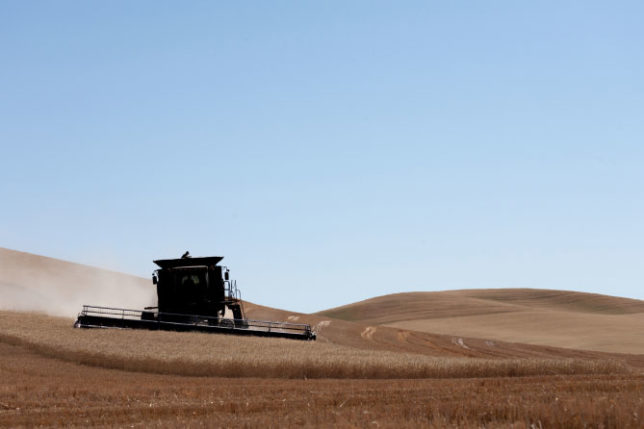While winter can be a time to catch up on a lot of jobs that were squeezed out of the schedule in season, it’s not the only time equipment maintenance and upkeep should be top of mind. Owning equipment that costs more than a Ferrari, or many super cars combined, is a risk and a responsibility – especially if you are counting on trading it in for a newer model down the road, or you just want to keep it in top condition to give you years of hassle-free service. Proper maintenance will extend the life of your equipment and will reduce overall cost of maintenance in the long term. Granted, maintenance is not cheap, but it is a great deal less than the cost of a catastrophic repair.
Equipment represents a very large investment integral to running the farm business. Your biggest asset in dealing with equipment maintenance is generally the dealership you purchased it from. It’s always a good idea to have a good working relationship with your dealership for that reason. Mechanics are highly trained and receive ongoing updates regularly. Most new equipment now comes with many onboard computers that will diagnose the problem. Additionally, many dealerships will offer regular customer clinics in all seasons on regular maintenance and operation.
Cleaning and inspection is the first step in any maintenance program. Cleaning keeps the machine operating smoothly and makes inspection for wear and tear and other damage easier. Maintenance and repairs are next. Follow the manufacturer’s recommendations for repairs, replacements, and fluid changes.
Taking safety precautions while working on the equipment is important. As a farmer and as an employer, the onus is on you to provide a safe working environment for yourself and any staff that will be assisting you.
- Never work on a running machine.
- Ensure the machine is properly braked.
- Remove the key to prevent unintentional start-up and lock any switches on static equipment.
- Secure anything that can rotate or move.
- Springs and hydraulics store energy. Be careful in their vicinity or when working on them.
- Always use the right tools for the job. Clean and store the tools afterwards.
- Always follow the manufacturer’s recommendations, procedures, and instructions.
- Check guards and account for tools before restarting the machine.
- Do not do a job for which you are not trained.
- If working under a raised piece of equipment, jack stands should be used.
- Release the pressure on hydraulics before working on those systems. Hydraulic fluid is under high pressure and an injection injury could lead to amputation or surgery. Never use hands to check for leaks.
General shop safety procedures will go a long way to ensure that personal safety is a priority as well as maintaining the maintenance tools and equipment in top condition.
- Keep your shop clean and tidy.
- Watch for tripping and slipping hazards.
- Keep floors free of obstructions and free of oils and other fluids.
- Keep welding gas bottles secured and upright when not in use.
- Only charge batteries in a well-ventilated area.
- Avoid chlorinated solvents for degreasing and degrease in a well-ventilated area.
- Keep tools clean and in good working condition.
- Use eye protection and respiratory protection when the work calls for it.
- Always wear steel-toed foot protection.
Key maintenance tips for various equipment will include:
- Keeping machines clean.
- Inspect machinery daily before starting.
- Making sure that nuts, cap screws, shields, and sheet metal parts are tight.
- Keeping maintenance records or logs.
- Do not abuse the machine.
- Check all fluid levels daily before starting.
- Lubricate bearings and chains.
- Check tire pressures.
- Check belts for tension, wear, tearing, cracking, swelling, and unraveling.
- Wipe off all grease as soon as possible (goes along with keeping machinery clean).
- Clean belts periodically in mild soap and water.
- Check pulleys for misalignment, excessive wear, damage, distortion, and dirt.
- Do not add new or old links to chains as it will wear on sprockets.
- Check alignment of all sprockets.
- Do not put new chain on worn sprockets, as its life will be shortened.
By keeping a regular maintenance schedule in season, and using the winter to go over every piece of equipment with a fine toothcomb, you increase the opportunity to keep repair expenses under control. It will also keep aggravation in check by reducing the chances of breakdowns.







Leave A Comment